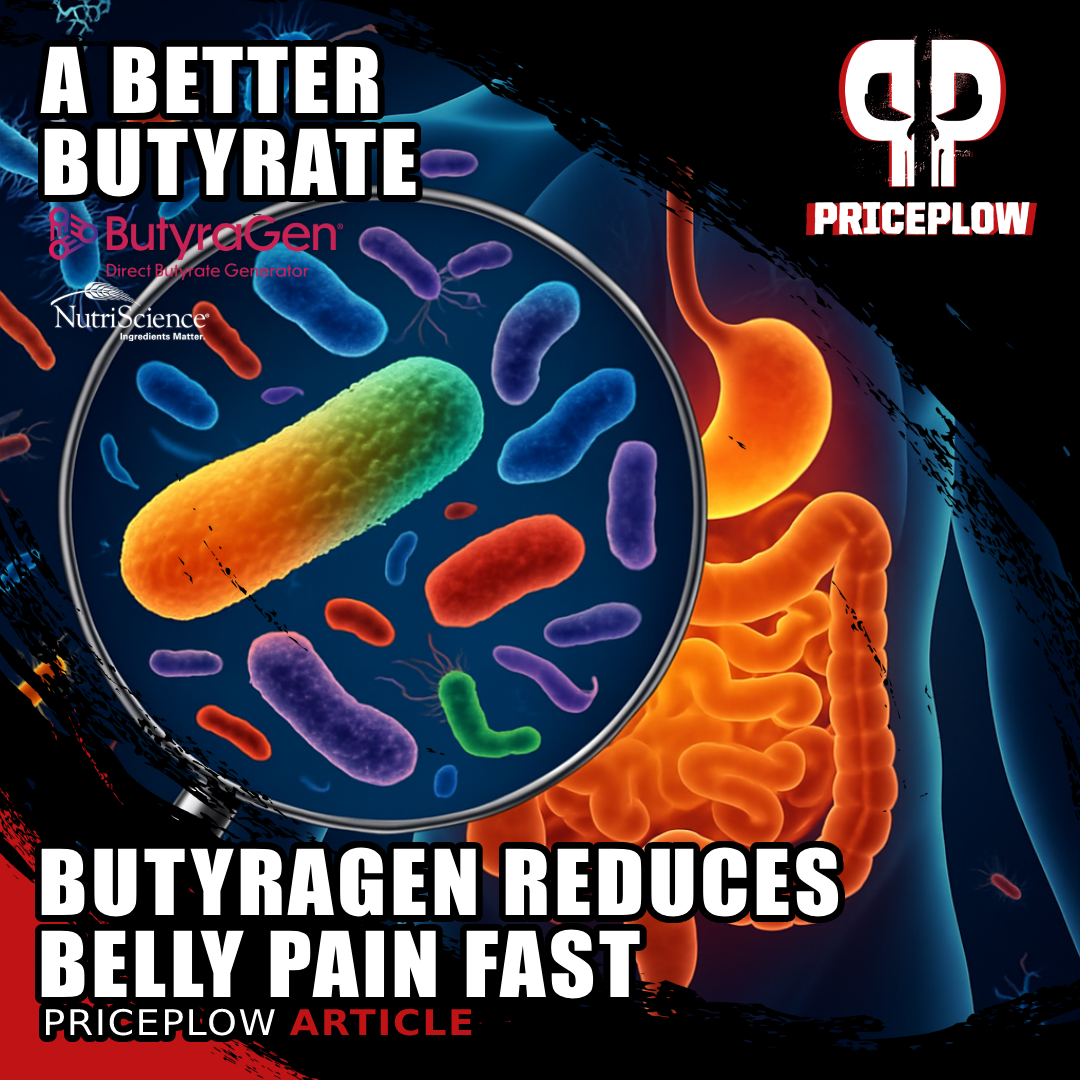
ButyraGen generates butyrate directly in your gut through enzymatic breakdown - no reliance on bacteria populations. Clinical studies show significant belly pain reduction at just 200mg daily, especially effective for women. Much more efficient than traditional prebiotics.
Summary: ButyraGen is a novel tributyrin-based complex that generates butyrate directly in the small intestine, bypassing the need or reliance on a healthy microbiome. Clinical studies show it reduces belly pain (especially in women) and supports digestive health at just 200mg daily -- equivalent to 4g of inulin for butyrate generation.
The Butyrate Paradox: Why Traditional Means Fall Short
The supplement industry has long understood that butyrate is a critical short-chain fatty acid (SCFA) for gut health, serving as the primary fuel for colon cells and playing essential roles in intestinal barrier function, immune modulation, and the gut-brain axis. The challenge has always been delivery: how do you get meaningful amounts of butyrate where it needs to go, while avoiding its notoriously noxious smell?
Traditional prebiotics like inulin and resistant starch rely on your microbiome to ferment fiber into butyrate and other short-chain fatty acids. But here's the problem: this only works if you have the right bacteria in the right place and in the right amounts. For millions dealing with dysbiosis, antibiotics, aging, or metabolic dysfunction, that's a big if. The unfortunate irony is that people who need butyrate the most often generate the least from fiber.
Even probiotic strains known to produce short-chain fatty acids, including butyrate, come with limitations. These bacteria typically need to successfully colonize the gut, a process influenced by diet, existing microbiota, immune status, and other host factors. Many probiotics are transient, meaning they pass through the digestive tract without establishing long-term residence. As a result, maintaining high enough populations to generate consistent SCFA production often requires continuous, high-dose supplementation, which may not be sustainable or effective for everyone, especially those with compromised microbiomes.
ButyraGen: The Next-Generation Prebiotic From NutriScience Innovations
Enter ButyraGen, developed by NutriScience Innovations, who developed a novel paradigm shift in prebiotic supplementation, attacking the negative feedback loop described above. Rather than feeding bacteria and hoping they produce butyrate, ButyraGen generates butyrate directly in the small intestine through the enzymatic breakdown of tributyrin -- completely independent of microbiome status.
ButyraGen's benefits aren't just theoretical: they've been demonstrated in two published human clinical trials.[1][2] In the most recently-published randomized, double-blind, placebo-controlled study, ButyraGen demonstrated significant reductions in belly pain and improvements in digestive quality of life, with especially strong effects in women and postmenopausal participants.[2] Even more impressive: just 200mg of ButyraGen delivers the same butyrate-generating power as 4 grams of inulin, but with significantly less gas and bloating.
This isn't just another prebiotic. It's a direct butyrate generator that works regardless of your gut bacteria status, age, diet, or health condition.
This article explores how this innovative ingredient is changing the conversation around gut health supplementation, and doing it in a small dose. First, be sure to sign up for our NutriScience and ButyraGen news alerts to get the latest developments delivered to your inbox. Then let's cover the butyrate basics and learn how ButyraGen does it better.
Subscribe to PricePlow's Newsletter and Alerts on These Topics
Understanding Butyrate: The Foundation
Before diving into ButyraGen's unique approach, it's essential to understand why butyrate has become such a focal point in gut health research. This short-chain fatty acid isn't just another metabolite, it's the primary fuel source for colonocytes, the cells that line your colon and maintain intestinal integrity.[3]
The Gut’s Preferred Energy Source
While most cells in your body prefer glucose for energy, colon cells have evolved to run primarily on butyrate. This preference isn't accidental: Butyrate provides approximately 70% of the energy needs for colonocytes, making it absolutely critical for maintaining a healthy intestinal lining.[3] When butyrate levels drop, colon cells literally starve, leading to compromised gut barrier function and increased intestinal permeability.
Key Mechanisms Beyond Energy
Butyrate's benefits extend far beyond simple cellular fuel. It plays crucial roles in several interconnected systems:
- Intestinal Barrier Function: Butyrate strengthens tight junctions between intestinal cells, reducing "leaky gut" and preventing harmful substances from entering systemic circulation.[4]
- Immune Modulation: The SCFA helps regulate inflammatory responses, promoting anti-inflammatory pathways while supporting appropriate immune function in the gut.[5]
- Gut-Brain Communication: Butyrate influences the gut-brain axis through multiple pathways, affecting everything from mood to cognitive function through direct neural, hormonal, and immune signaling.[5]
The Delivery Challenge
Here's where things get complicated. Despite butyrate's clear importance, getting adequate amounts where they're needed has proven surprisingly difficult. Traditional dietary sources provide minimal amounts, and direct butyrate supplementation faces significant challenges: sodium butyrate tastes absolutely awful and smells even worse.
The real challenge lies in achieving controlled and consistent butyrate delivery. Traditional sodium butyrate supplements get absorbed immediately in the stomach, providing limited exposure to the intestines and causing significant taste and odor problems. Meanwhile, traditional prebiotics depend entirely on having the right bacterial populations to ferment fiber into butyrate -- a process that fails when the microbiome is compromised. This creates a fundamental gap: people who need butyrate support most often have the least capacity to produce it naturally.
We'll be covering butyrate's fascinating biochemistry, research applications, and therapeutic potential in much greater detail in our upcoming butyrate guide. For now, understanding the above foundational concepts sets the stage for appreciating why ButyraGen's approach is such a significant advancement in butyrate delivery.
So butyrate is incredibly important, but it's tough to get it to go where we want it to go. This is where NutriScience Innovations comes in:
The ButyraGen Advantage: Direct Butyrate Generation
Most gut health supplements follow the same basic playbook: feed the bacteria, hope they multiply, and cross your fingers that they produce enough beneficial compounds. ButyraGen allows supplement formulators to greatly improve upon that playbook. Instead of relying on your microbiome to do the heavy lifting, it generates butyrate directly where it's needed most.
Traditional Prebiotics/Probiotics vs. ButyraGen
To understand why ButyraGen represents such a breakthrough, let's examine how traditional prebiotics work... and why they often fall short:
The Traditional Approach: Conventional prebiotics like inulin, FOS, and resistant starch follow a simple but problematic pathway: fiber → microbiome fermentation → short-chain fatty acids (SCFAs). You consume the fiber, it travels to your large intestine largely intact, and then your gut bacteria break it down into butyrate, acetate, and propionate. Simple enough, right?
The Problem: This approach has a fundamental dependency issue. It only works if you have the right gut composition. If your microbiome is compromised due to antibiotic use, poor diet, stress, aging, or genetic factors, you're essentially feeding bacteria that may not be there or may not be capable of producing adequate butyrate.

This overview shows how butyrate influences multiple aspects of gut health simultaneously - from strengthening barriers to calming inflammation to supporting healthy cell growth.[4]
Consider these common scenarios where traditional prebiotics often fail:
- Post-antibiotic recovery: Your beneficial bacteria populations are decimated
- Aging: Microbiome diversity naturally declines with age, reducing butyrate production capacity
- Digestive disorders: Conditions like SIBO, IBS, or dysbiosis create environments where harmful bacteria may outcompete beneficial ones
- Individual variation: Some people simply lack the genetic capacity for robust butyrate production
ButyraGen's Direct Approach: ButyraGen sidesteps these limitations entirely. Its primary active ingredient, tributyrin, doesn't need bacteria to work. When you consume ButyraGen, pancreatic lipase enzymes in your small intestine break down tributyrin directly into butyrate and glycerol. The butyrate is immediately available -- no fermentation required, no microbiome dependency, no waiting for bacterial populations to recover.
This brings a fundamental shift from "feed and hope" to "deliver and utilize".
Composition and Mechanism
ButyraGen's effectiveness comes from its carefully-engineered composition that delivers butyrate through multiple complementary pathways.
Primary Active: Tributyrin (50% of complex)
Each 200mg dose of ButyraGen contains 100mg of tributyrin, a short-chain triglyceride consisting of three butyrate molecules attached to a glycerol backbone. This isn't just any tributyrin, either: NutriScience uses a proprietary process that significantly reduces residual butyric acid levels, eliminating the notorious smell and taste issues that plague other tributyrin products.
Secondary Actives: Fiber Complex
The remaining 50% consists of Sunfiber® (partially hydrolyzed guar fiber) and acacia fiber. These aren't just inactive fillers -- they serve multiple functions:
- Provide traditional prebiotic benefits for those with healthy microbiomes
- Contribute to the low water activity that makes ButyraGen incredibly stable
- Help to mask any residual aroma from the tributyrin
- Support the breakdown of glycerol (from tributyrin) into additional SCFAs
Dual Mechanism Advantage
ButyraGen works through both direct generation and traditional fermentation, though direct generation is the primary mechanism. The tributyrin provides immediate butyrate availability, while the fiber components can be fermented by beneficial bacteria for additional SCFA production. This dual approach ensures butyrate delivery regardless of microbiome status.
Dosing Efficiency: Small Dose, Big Impact
Here's where ButyraGen truly shines: efficiency. Clinical testing has demonstrated that just 200mg of ButyraGen generates the same amount of butyrate as 4 grams of inulin or 1 gram of XOS (xylooligosaccharides). This means you get the same butyrate-generating power from a tiny capsule than you'd get from nearly a teaspoon of inulin powder. With less gas and less bloating to boot!
Formulation Stability
Thanks to its fiber components, the low water activity of ButyraGen makes it quite stable and suitable for combination with moisture-sensitive ingredients like probiotics. This opens up possibilities for sophisticated synbiotic formulations that would be impossible with traditional high-dose prebiotics.
This isn't just theory: two published human studies have validated ButyraGen's approach, demonstrating not only its butyrate-generating capability but also real-world health benefits.
Clinical Evidence: Two Published Human Studies
ButyraGen's claims are backed by two published human clinical trials that demonstrate both safety and efficacy:
-
Pilot Study (Smith et al. 2024): Safety and Mechanism
The first published study served as a proof-of-concept investigation, designed to answer fundamental questions about ButyraGen's safety, tolerability, and mechanism of action in healthy adults.[1]
The initial safety study tested two doses of ButyraGen over 28 days. All participants started with a week of placebo before randomizing to either 200mg or 400mg daily doses.[1]
Study Design
This 28-day randomized controlled trial enrolled 24 healthy participants. The researchers used a sequential design where participants first completed a 7-day placebo phase, followed by 21 days of active supplementation. Participants were then randomly assigned to either 200mg ButyraGen (100mg tributyrin) or 400mg ButyraGen (200mg tributyrin) daily.
The safety trial successfully retained most participants through completion, with 24 people providing full data sets for analysis of both safety and efficacy markers.[1]
The placebo was ingeniously designed to contain all of ButyraGen's ingredients except tributyrin, allowing researchers to isolate the specific effects of the primary active ingredient. This approach provided cleaner data on tributyrin's unique contributions versus the fiber components.
Key Findings
The pilot brought a lot of knowledge to the table:
-
Excellent Tolerability Profile
The study's primary safety endpoint was met with flying colors. Both doses showed excellent tolerability with no significant adverse events reported. Even at double the recommended dose (400mg), participants experienced minimal digestive discomfort, which is in stark contrast to the gas and bloating typically associated with gram quantities of traditional prebiotics.
-
Evidence of Butyrate Generation and Systemic Activity
While the researchers couldn't directly measure butyrate in blood (butyrate is rapidly absorbed and utilized), they observed evidence of butyrate generation and absorption. Metabolic markers suggested butyrate was being generated in the small intestine, absorbed, and transported to the liver for further metabolic activity, exactly as the theoretical mechanism predicted.
-
Anti-Inflammatory Trends
The study revealed trends in inflammatory markers, with hs-CRP (high-sensitivity C-reactive protein) showing reductions in supplemented participants. While not reaching statistical significance in this small pilot study, these trends suggest ButyraGen may support healthy inflammatory responses through butyrate's well-established anti-inflammatory pathways.
-
Possible Hormetic Effect
One of the most interesting findings was evidence of a hormetic effect, where the lower dose showed more pronounced benefits than the higher dose in certain markers, including glucose and inflammatory cytokines. This suggests that 200mg may indeed be the optimal dose for chronic supplementation, supporting the manufacturer's recommended dosing.
-
Fecal SCFA Changes
The study observed significant decreases in fecal acetate and propionate levels, with trends toward reduced butyrate in feces. Rather than indicating reduced SCFA production, these changes likely reflect increased utilization -- the SCFAs were being absorbed and used by the body rather than being excreted as waste.
Clinical Implications
This pilot study established several critical points: ButyraGen is safe and well-tolerated at both tested doses, it generates measurable biological activity consistent with butyrate production, and it shows promising trends in key health markers. The study provided the foundation for larger, more targeted clinical investigations, setting the stage for the belly pain study that would follow:
-
-
Belly Pain Study (Dosz et al. 2025): Digestive Health Outcomes
Building on the safety and mechanism data from the pilot study, researchers conducted a larger, more targeted investigation focusing on real-world digestive health outcomes in people seeking to improve their gut health.[2]
The clinical trial recruited participants nationwide, with higher concentrations in California, Texas, and several Midwest states. This geographic diversity helps ensure the results apply to a broad population.[2]
Study Design and Population
This randomized, double-blind, placebo-controlled study represented a significant step forward in ButyraGen research. A total of 596 individuals were enrolled, but the final analysis was based on 213 qualified participants who met the modified per protocol criteria and reliably took the supplement as directed.[2]
Nearly 600 people enrolled in the study, split evenly between ButyraGen and placebo groups. After filtering for those who followed the protocol properly, 213 participants provided the final data.[2]
Unlike the pilot study's focus on healthy participants, this investigation specifically recruited individuals with self-reported desires to improve their digestive health. These weren't people with diagnosed gastrointestinal diseases, but rather everyday individuals experiencing the common digestive discomforts that millions face, making for the perfect population to test ButyraGen's practical benefits.
The participants were randomized to receive either 200 milligrams of ButyraGen or placebo once daily for the duration of the study.
Both groups stuck with the study well - over 90% of participants completed their weekly questionnaires throughout the 6-week trial. High completion rates mean more reliable results.[2]
This study's design was more robust than the pilot, employing a true placebo control throughout the entire study period rather than the sequential placebo design used previously. This approach provided cleaner data on ButyraGen's effects compared to no treatment.
Primary Findings
The trial had several incredible outcomes:
-
Significant Reduction in Belly Pain
ButyraGen users saw steadily increasing relief from belly discomfort, jumping from 46% improvement at week 1 to over 77% by weeks 5 and 6. The placebo group plateaued around 58% improvement.[2]
The study's headline finding was a statistically significant reduction in belly pain among participants taking ButyraGen.[2] The US National Library of Medicine defines "belly pain" broadly as discomfort anywhere from the upper chest to the groin, essentially covering the entire midsection where digestive discomfort commonly occurs. This broad definition captures the full spectrum of digestive-related pain that people can experience in daily life.
The results were impressive because belly pain is notoriously difficult to treat with supplements. Unlike biomarkers that can fluctuate for various reasons, pain reduction represents a tangible, patient-relevant outcome that directly impacts quality of life.
-
Improved Digestive Quality of Life (DQLQ)
Beyond just pain reduction, participants reported broader improvements in digestive quality of life. The study used validated questionnaires to assess various aspects of digestive wellness, revealing that ButyraGen's benefits extended beyond a single symptom to encompass overall digestive comfort and function.
Participants consistently completed standardized pain assessments each week, maintaining 96-100% response rates. This validated tool helps objectively measure digestive discomfort changes.[2]
The study documented significant improvements in two specific digestive complaints that commonly plague adults:[2]
- Reflux symptoms: Participants suffering from reflux experienced an improvement in their DQLQ, suggesting ButyraGen's benefits extend to upper digestive tract function
- Constipation relief: Participants suffering from constipation experienced improvements in DQLQ, indicating that ButyraGen supports healthy digestive transit with benefits extending to the lower GI.
These findings align perfectly with butyrate's known mechanisms: supporting intestinal barrier function, promoting healthy gut motility, and modulating inflammation throughout the digestive system.
Clinical Significance
This study transformed ButyraGen from a promising ingredient with good safety data into a clinically validated digestive health solution. The fact that participants with real digestive concerns experienced meaningful symptom relief validates the direct butyrate generation approach and establishes ButyraGen as a legitimate therapeutic option for common digestive complaints.
But it gets better - diving deeper into the data shows something even more promising:
-
Women’s Health: The Standout Finding
While ButyraGen showed promise across all participants in the digestive health study, the most powerful results emerged when researchers analyzed the data by gender. What they discovered was a clear pattern: women experienced significantly greater benefits from ButyraGen supplementation, with postmenopausal women showing the most dramatic improvements.
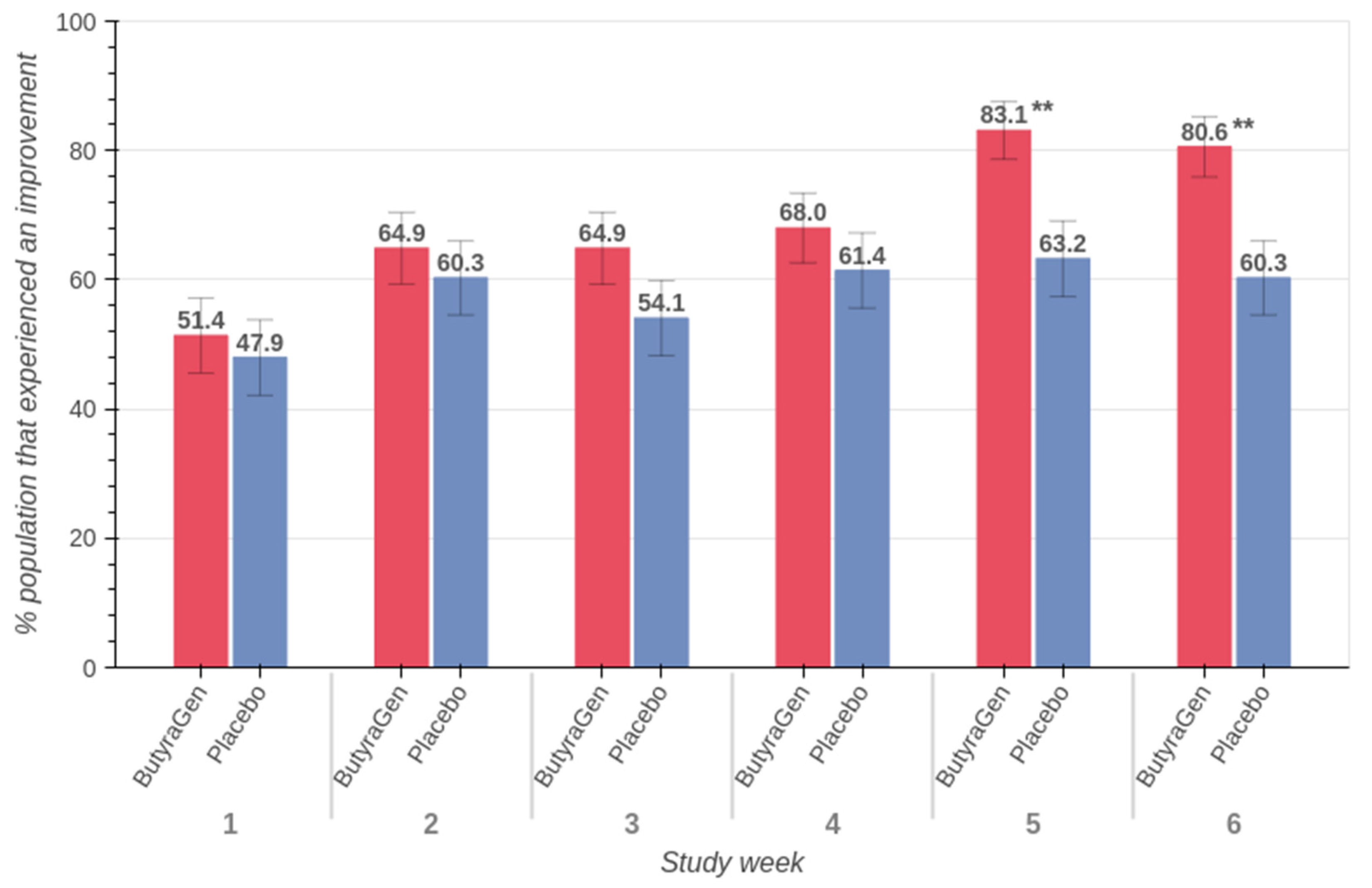
Women experienced exceptional results with ButyraGen, achieving over 86% improvement in belly pain by week 6 - significantly outperforming the 60% improvement seen with placebo.[2]
Female-Specific Benefits
The 2025 study's demographics tell an important story. With 68% of participants being women, researchers had sufficient statistical power to analyze their specific response, and the results were incredible.[2] This wasn't simply due to the higher number of female participants -- it reflected genuinely stronger improvement in both belly pain and gas and bloating responses in women.
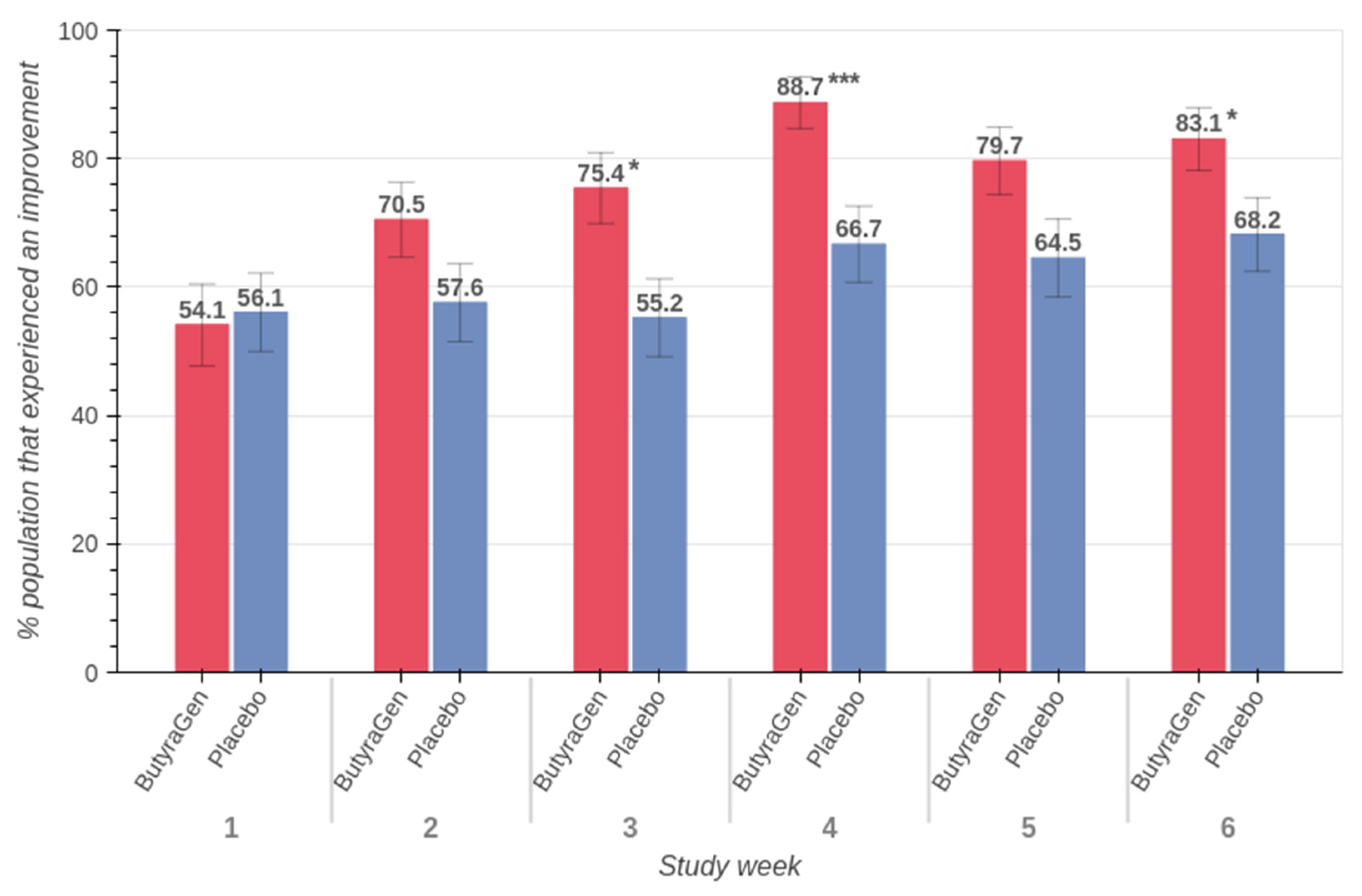
Female participants saw dramatic improvements in gas and bloating symptoms, reaching 88% improvement with ButyraGen by week 4 compared to 66% with placebo.[2]
-
Postmenopausal Women: The Biggest Beneficiaries
The benefits became even more pronounced when researchers focused specifically on postmenopausal women. This subset showed the most dramatic improvements in belly pain reduction,[2] suggesting that hormonal changes may create conditions where direct butyrate generation becomes especially valuable.
Diving deeper, there are some good reasons this happened:
Postmenopausal Considerations
The enhanced benefits in postmenopausal women make sense, and align perfectly with what we know about aging, hormones, and gut health. Several interconnected factors make this population ideal candidates for ButyraGen supplementation.
-
Hormonal Impact on Gut Health
Estrogen plays a crucial role in maintaining gut barrier function and supporting beneficial bacteria populations.[6] As estrogen levels decline during menopause, women often experience increased intestinal permeability, altered gut motility, and shifts in microbiome composition. These hormonal shifts could be attributed to the estrobolome, a collection of gut microbiota involved in estrogen metabolism that plays a crucial role in regulating circulating estrogen levels via reactivation and absorption. These changes can manifest as increased bloating, constipation, reflux, and general digestive discomfort, which are the exact symptoms that improved with ButyraGen supplementation.
-
Microbiome Diversity Decline
Research consistently shows that microbiome diversity decreases with age,[7] and this decline is often more pronounced in women after menopause.[8] A less diverse microbiome typically means reduced capacity for butyrate production through traditional fiber fermentation.[9] This creates a perfect storm: increased need for butyrate due to hormonal changes, but decreased ability to produce it naturally.
-
Direct Generation Advantage
This is where ButyraGen's microbiome-independent approach works to a woman's advantage. While other prebiotics become less effective as beneficial bacteria populations decline, ButyraGen continues to generate butyrate through enzymatic action regardless of microbiome status. For postmenopausal women dealing with both hormonal changes and age-related microbiome decline, this direct generation approach may be the difference between effective gut support and frustrating supplement failures.
-
Beyond Digestive Health
The benefits may extend beyond digestion. Butyrate influences systemic inflammation,[10,11] which tends to increase during menopause. The gut-brain axis connections mean that improved gut health can potentially impact mood, sleep, and cognitive function -- all areas where postmenopausal women commonly experience challenges.
These findings suggest that ButyraGen may be especially valuable for women navigating the complex digestive changes that accompany hormonal transitions, offering a reliable source of butyrate when traditional approaches may fall short.
Mechanism Deep Dive: How ButyraGen Works
Understanding exactly how ButyraGen generates butyrate reveals why this ingredient works so consistently compared to other prebiotics. The mechanism involves multiple complementary pathways that work together to deliver butyrate both directly and through microbiome fermentation, bringing the best of both worlds.
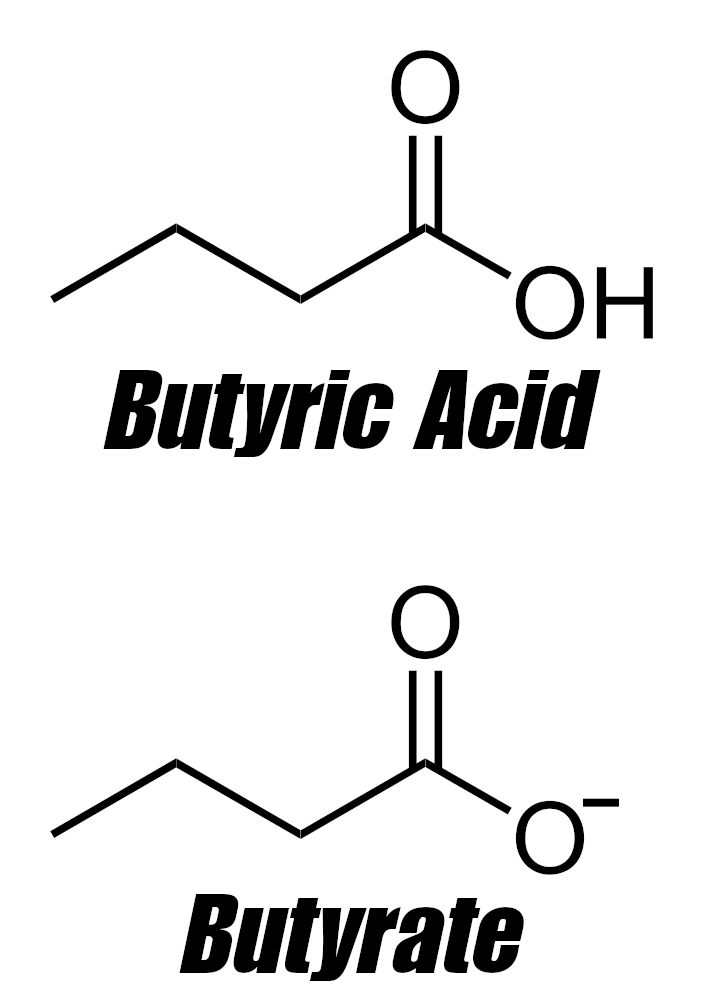
Butyric Acid vs. Butyrate. With tributyrin, we'll have three butyrate molecules attached to glycerol.
Small Intestine Action
The primary mechanism that makes ButyraGen unique occurs in the small intestine, where most nutrient absorption takes place. This is fundamentally different from traditional prebiotics, which must travel to the large intestine to be fermented by bacteria.
Lipase-Mediated Tributyrin Hydrolysis
When ButyraGen reaches the small intestine, pancreatic lipase enzymes immediately recognize tributyrin as a substrate for hydrolysis. Tributyrin is a short-chain triglyceride consisting of three butyrate molecules esterified to a glycerol backbone -- it's essentially a "butyrate delivery system" that remains stable until it encounters the right enzymes.[1]
The hydrolysis process is straightforward yet elegant:
- Lipase recognition: Pancreatic lipase enzymes encounter tributyrin in the small intestine
- Enzymatic cleavage: Lipase cleaves the ester bonds between butyrate and glycerol
- Immediate release: Three butyrate molecules are liberated along with glycerol
- Ready for absorption: Free butyrate and butyrate monoglycerides become available for direct absorption
This process occurs within minutes of reaching the small intestine, leading to the next benefit:
Direct Butyrate Absorption
The butyrate generated from tributyrin hydrolysis is immediately available for absorption throughout the small intestine. Unlike traditional prebiotics that must wait for bacterial fermentation in the colon, this direct generation approach provides several advantages:
- Immediate Availability: Butyrate is released and absorbed within the small intestine, providing rapid onset of benefits compared to the hours required for fiber fermentation.
- Consistent Delivery: The amount of butyrate generated depends on enzymatic activity rather than variable microbiome composition, ensuring consistent results across different individuals.
- Broad Absorption Window: Butyrate can be absorbed all along the small intestine and even into the proximal colon, maximizing bioavailability.[12]
Potential Systemic Circulation
Clinical evidence from the ButyraGen pilot study suggests that some of the generated butyrate enters systemic circulation and reaches the liver. While researchers couldn't directly measure butyrate in blood at supplement doses (it's rapidly absorbed and utilized), metabolic markers indicated butyrate generation and liver uptake.[1]
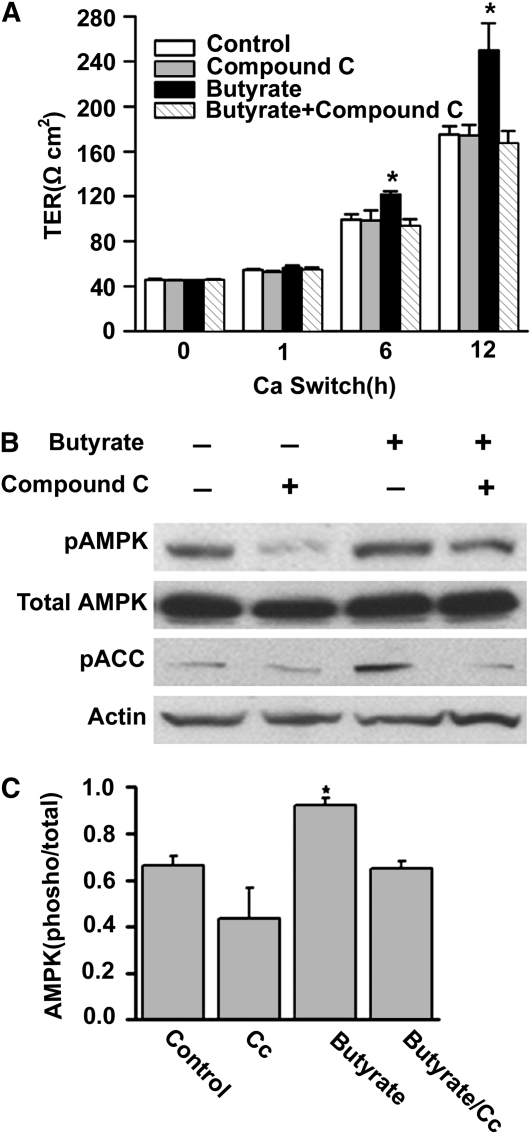
Scientists confirmed butyrate works through AMPK activation by blocking this pathway with Compound C. When AMPK is inhibited, butyrate's protective effects disappear.[4]
This systemic availability is significant because it means ButyraGen's benefits extend beyond just local gut effects. Butyrate receptors are present throughout the body, and systemic butyrate can influence inflammation, metabolism, and even brain function through the gut-brain axis.
Unaffected by Diet, Genetics, Disease State
The consistency of ButyraGen's mechanism makes it especially valuable for populations where other prebiotics often fail:
- Dietary Independence: Unlike fiber-based prebiotics that require specific bacterial populations nurtured by high-fiber diets, ButyraGen works regardless of recent dietary patterns.
- Genetic Resilience: Individual genetic variations in microbiome composition and butyrate production capacity don't affect ButyraGen's efficacy.
- Digestive Disorder Applications: People with dysbiosis, IBS, or other digestive disorders such as leaky gut often have impaired fiber fermentation capacity, making ButyraGen a more reliable option.
Consistent Butyrate Delivery
Clinical studies demonstrate this consistency in action. The pilot study showed that ButyraGen generated biological responses across all participants, regardless of their baseline microbiome composition or health status. This consistency is what makes ButyraGen suitable for widespread supplementation rather than being limited to individuals with optimal gut health.
Secondary Fiber Effects
While tributyrin provides the primary mechanism, ButyraGen's fiber components -- Sunfiber® (partially hydrolyzed guar fiber) and acacia fiber -- contribute additional benefits through prebiotic pathways.
Sunfiber® and Acacia Fiber Fermentation
The fiber components serve multiple functions beyond just being inactive carriers:
- Traditional Prebiotic Activity: For individuals with healthy microbiomes, these fibers provide substrate for beneficial bacteria, supporting traditional SCFA production pathways.
- Glycerol Utilization: The glycerol released from tributyrin hydrolysis can be fermented by gut bacteria along with the fiber components, creating additional butyrate production beyond the direct generation.
- Microbiome Support: The two fiber ingredients can help maintain and support beneficial bacteria populations, creating a synergistic relationship between direct butyrate generation and traditional prebiotic effects.
Additional SCFA Production
The fermentation of ButyraGen's fiber produces the full spectrum of short-chain fatty acids:
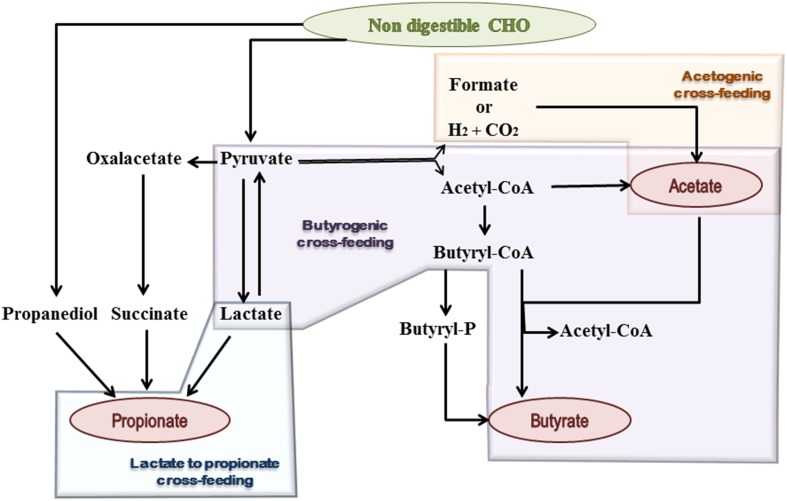
"Schematic representation of microbial metabolic pathways and cross-feeding mechanisms, contributing to SCFA formation in the human gut. Shaded geometric shapes summarize routes of formation for each of the three main SCFA: acetate, propionate, and butyrate."[13]
- Butyrate: Additional butyrate from fiber fermentation supplements the directly generated butyrate
- Propionate: Supports metabolic health and may have anti-inflammatory effects
- Acetate: Serves as a substrate for other beneficial bacteria and contributes to overall gut health
Clinical evidence supports this dual mechanism. The pilot study showed significant reductions in fecal acetate and propionate levels, indicating increased utilization of these SCFAs.[1] This is exactly what would be expected from effective supplementation.
Synergistic Effects with Direct Butyrate Generation
The combination of direct butyrate generation and traditional fiber fermentation creates a synergistic effect that's greater than the sum of its parts:
- Immediate + Sustained Release: Direct generation provides rapid onset benefits, while fiber fermentation provides sustained SCFA production over time.
- Broad Spectrum Activity: The combination addresses both immediate butyrate needs and long-term microbiome health.
- Amplified Benefits: NutriScience's internal ex vivo data shows that ButyraGen combined with probiotics produces significantly more butyrate than either approach alone, suggesting that the dual mechanism enhances overall effectiveness.
This dual-pronged mechanism explains why ButyraGen consistently delivers results across diverse populations and why it outperforms traditional prebiotics. The combination of reliable direct generation with supportive fiber fermentation is a wisely-developed system for butyrate delivery that works regardless of individual microbiome status.
Dosing and Safety
ButyraGen's dosing recommendations are based on the above clinical evidence, while its safety profile has been established through multiple published studies and regulatory review.
Recommended Dosing
- Standard Dose: 200mg Daily Clinical studies establish 200mg daily as the optimal dose for ButyraGen, delivering 100mg of tributyrin. This dose was selected based on in vitro human stool studies and confirmed through clinical trials showing significant health benefits with excellent tolerability.[2]
- Higher Dose: 400mg Daily Tested Safely The pilot study tested 400mg daily (200mg tributyrin) and found it safe and well-tolerated, though the 200mg dose showed more favorable effects in some markers, supporting the standard dosing recommendation.[1]
Safety Profile
Both ButyraGen itself and its components are very safe and well-tolerated:
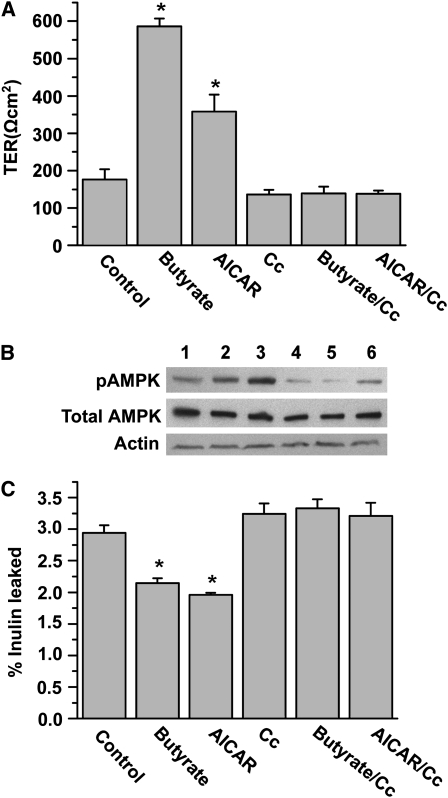
Cell studies demonstrate how butyrate strengthens intestinal barriers through AMPK activation. This cellular mechanism helps explain why participants experienced such meaningful digestive relief.[4]
Self-Affirmed GRAS Status
ButyraGen has achieved self-affirmed GRAS (Generally Recognized as Safe) status, meaning it has been determined safe for its intended use based on scientific evidence and expert consensus. The active components (tributyrin and partially hydrolyzed guar fiber) are also both individually self-affirmed GRAS as well, providing a foundation of established safety.
Clinical Safety Evidence
The two published clinical studies demonstrate ButyraGen's excellent safety profile:
- No Significant Adverse Events: Neither study reported any serious adverse events related to ButyraGen supplementation
- Excellent Tolerability: Less than 10% of participants in the pilot study reported any gastrointestinal-related discomfort, and those reports were minimal and transient
- Well-Tolerated at Higher Doses: Even at double the recommended dose (400mg), tolerability remained excellent
Minimal Digestive Side Effects
Unlike many gut health supplements that can cause gas, bloating, or digestive upset, ButyraGen showed minimal digestive side effects. The low dose and direct generation mechanism bypasses the fermentation process that typically causes these issues with other prebiotics. Clinical studies confirm that ButyraGen produces significantly less gas than equivalent doses of inulin or XOS while delivering superior butyrate generation.
Regulatory Compliance
NutriScience ensures all applicable regulatory requirements for dietary supplements, including safety testing for potency, microbial contamination, heavy metals, pesticides, and residual solvents. The ingredient is suitable for use in dietary supplements, functional foods, and beverages.
The combination of GRAS status, clinical safety data, and excellent tolerability makes ButyraGen a low-risk ingredient suitable for daily, long-term supplementation across diverse populations.
Formulation and Practical Considerations
ButyraGen's design addresses many of the practical challenges that have historically limited butyrate supplementation. From formulation stability to consumer acceptance, these advantages make it a viable ingredient for mainstream supplement applications.

Research shows butyrate activates key protective pathways in gut cells within hours. This rapid cellular response aligns with the quick symptom improvements seen in human trials.[4]
Formulation Advantages
- Low Dose Requirement: At just 200mg per effective dose, ButyraGen fits easily into capsules, tablets, or powder formulations without dominating the formula. This low dose requirement leaves room for other active ingredients, making it ideal for single-ingredient capsules, comprehensive gut health supplements, or general wellness formulations where space is at a premium.
- Minimal Odor Profile: Unlike sodium butyrate, which has a notoriously putrid smell, ButyraGen's proprietary processing reduces residual butyric acid to negligible levels. The resulting powder has minimal odor, making it suitable for consumer-friendly products without requiring extensive masking or flavoring.
- No "Butyrate Burp": Traditional butyrate supplements often cause unpleasant aftertastes and burping due to stomach absorption. ButyraGen's tributyrin remains stable until it reaches the small intestine, eliminating these tolerability issues and improving consumer compliance.
- Stable, Free-Flowing Powder: ButyraGen's physical properties make it friendly for manufacturers. The off-white powder flows easily through manufacturing equipment, blends uniformly with other ingredients, and maintains stability under typical storage conditions.
- Low Water Activity: The fiber components in ButyraGen contribute to extremely low water activity, a critical advantage for formulations containing moisture-sensitive ingredients (such as probiotics). This property makes ButyraGen suitable for direct combination with probiotics, where moisture control is essential for maintaining bacterial viability.
Synbiotic Potential
- Ex Vivo Synergy Evidence: Unpublished lab studies demonstrate that ButyraGen works synergistically with specific probiotic strains. When combined with Lacticaseibacillus rhamnosus GG (LGG) the combination produces significantly more butyrate than either ingredient alone.
- Enhanced Endogenous Short Chain Fatty Acid Generation: The use of ButyraGen may create a positive feedback loop where direct butyrate generation enhances the environment for bacterial SCFA production.
The practical advantages of ButyraGen remove many of the barriers that have prevented widespread butyrate supplementation, making it a formulator-friendly ingredient that can enhance a wide range of digestive health products -- and it won't make them taste horrific!
Comparison to Other Butyrate Sources
NutriScience Innovation's unique approach to butyrate generation becomes clearer when compared to other available options. Each approach has distinct advantages and limitations that affect both consumer experience and clinical effectiveness. A product is only effective if you are consuming it, and ButyraGen has solved the issues that negatively impact consumer compliance.
vs. Sodium Butyrate
- Taste and Odor Issues: Sodium butyrate presents significant palatability challenges due to its astringent, putrid smell and taste that lingers after consumption. As noted in the literature, "tolerability is a major challenge due to its astringency, putrid smell and taste that lingers after intake."[1] ButyraGen addresses this through its proprietary tributyrin processing that reduces residual butyric acid levels, which are the primary cause of the offensive odor in traditional butyrate products.
- Stomach vs. Small Intestine Release: Sodium butyrate is readily absorbed from the stomach, providing limited exposure to the intestines where butyrate is most needed.[1] In contrast, ButyraGen's tributyrin remains stable until it reaches the small intestine, where pancreatic lipase releases butyrate for absorption throughout the small intestine and possibly the proximal colon.
- Tolerability Advantages The clinical evidence demonstrates ButyraGen's superior tolerability profile. While sodium butyrate causes immediate taste and odor issues, ButyraGen showed minimal digestive discomfort even at double the recommended dose, with less than 10% of participants reporting any gastrointestinal-related issues.[1] The tributyrin doesn't break down until small intestine enzymes are present, eliminating the "butyrate burp" phenomenon common with sodium butyrate.
vs. Traditional Prebiotics
- Dosing Efficiency: The greatest difference is dosing efficiency. Clinical studies demonstrate that 200mg of ButyraGen generates equivalent butyrate levels to 4 grams of inulin or 1 gram of XOS, making respective 20-fold and 5-fold advantages.
- Reduced Gas and Bloating: Traditional prebiotics often cause significant digestive discomfort due to bacterial fermentation in the colon. NutriScience's in vitro studies show significantly less gas production compared to both inulin and XOS, while generating equivalent butyrate levels. This reduction in gas production correlates with improved tolerability in clinical studies.
- Microbiome Independence: Traditional prebiotics are entirely dependent on having sufficient populations of butyrate-producing bacteria, while ButyraGen generates butyrate through pancreatic lipase action. This makes it effective regardless of microbiome composition, health status, age, or recent antibiotic use.
- Faster Onset of Benefits While traditional prebiotics require hours of bacterial fermentation in the colon, ButyraGen's tributyrin releases butyrate within minutes of reaching the small intestine. This direct generation approach provides rapid onset of benefits compared to the delayed effects of fiber fermentation.
vs. Tributyrin Alone
- Better Processing: ButyraGen's tributyrin undergoes proprietary processing that reduces residual butyric acid levels, which are the source of the offensive odor in typical tributyrin products. This creates a nearly-odorless product with minimal taste, addressing the primary barrier to tributyrin supplementation.
- Fiber Complex for Additional Benefits: While tributyrin alone provides direct butyrate generation, ButyraGen's fiber complex (Sunfiber® and acacia fiber) adds traditional prebiotic benefits. The glycerol released from tributyrin hydrolysis can be fermented alongside the fiber components, creating additional SCFA production beyond the direct butyrate generation.
- Improved Stability and Formulation Properties: The fiber components contribute to ButyraGen's extremely low water activity, creating far greater stability and making it suitable for direct combination with moisture-sensitive ingredients like probiotics. The fiber also ensures the product is free flowing for ease of formulation.
These comparisons highlight why ButyraGen is a significant advancement in butyrate supplementation. It combines the direct generation benefits of tributyrin with the additional advantages of fiber components, while eliminating the tolerability issues that have limited other butyrate sources.
Who Should Consider ButyraGen?
ButyraGen's unique mechanism of action makes it suitable for a very broad range of individuals, but certain populations may benefit more than others based on the clinical evidence and underlying science.
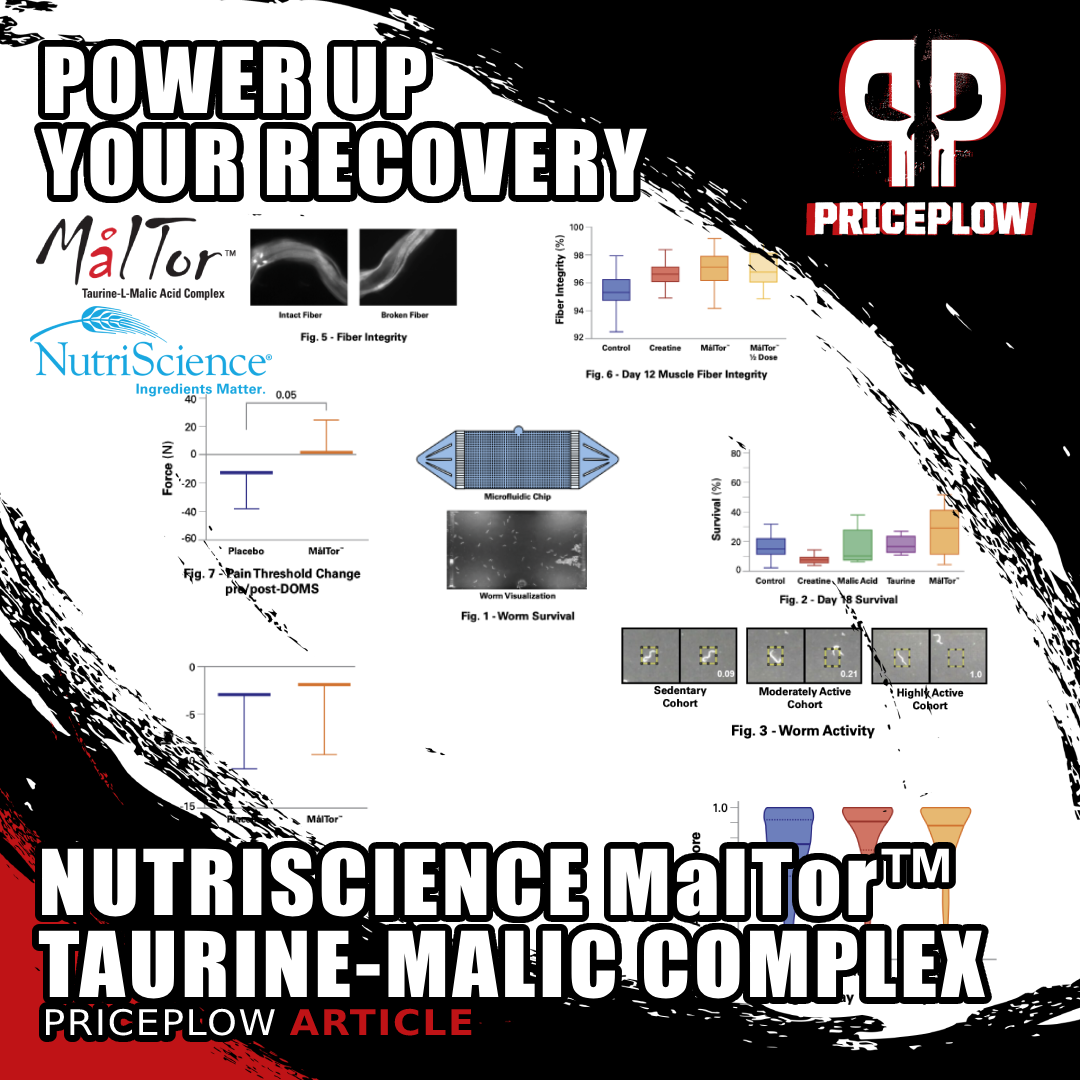
MalTor™ combines taurine and L-malic acid to boost recovery, reduce muscle soreness, and enhance mitochondrial function. Research shows this 2:1 complex significantly improves pain threshold after intense workouts!
Primary Candidates
- Adults Seeking Digestive Health Support: Anyone looking to support their digestive health can benefit from ButyraGen's direct butyrate generation. The ingredient is designed for everyday wellness rather than treating specific diseases, making it appropriate for general digestive health maintenance.
- Those with Compromised Microbiomes: Individuals with disrupted gut bacteria populations often struggle with traditional prebiotics. ButyraGen's microbiome-independent approach makes it ideal for people whose gut bacteria can't effectively produce butyrate from fiber.
- Individuals Intolerant to High-Fiber Prebiotics: People who experience excessive gas, bloating, or digestive discomfort from traditional prebiotics can benefit from ButyraGen's low-dose, direct-generation approach. The 200mg dose eliminates the need for gram quantities of fiber that often cause digestive upset.
- People Experiencing Belly Pain or Digestive Discomfort: Based on clinical evidence showing significant reductions in belly pain and improvements in digestive quality of life, ButyraGen may be particularly beneficial for individuals dealing with general digestive discomfort, including reflux and constipation symptoms.
Special Populations
- Women, Especially Postmenopausal: Highlighted above, women experience significantly greater benefits from ButyraGen supplementation, with postmenopausal women showing the most dramatic improvements. The hormonal changes during menopause that affect gut health make this population ideal candidates for direct butyrate generation.
- Older Adults with Declining Microbiome Diversity: As microbiome diversity naturally decreases with age, the ability to produce butyrate from traditional prebiotics diminishes. ButyraGen's enzyme-dependent mechanism remains effective regardless of age-related microbiome changes, making it valuable for older adults seeking gut health support.
- Those on Antibiotics or with Dysbiosis: Individuals currently taking antibiotics or recovering from antibiotic treatment often have disrupted microbiomes that struggle to produce adequate butyrate. ButyraGen provides consistent butyrate generation during microbiome recovery periods.
Note about pregnancy and breastfeeding: While no specific contraindications have been identified in published studies, pregnant and breastfeeding women should consult their healthcare provider before using ButyraGen, as with any dietary supplement.

What if your pre-workout could boost performance AND accelerate recovery? In Formulator's Corner #16 we designed a hypothetical mito-recovery formula centered on MalTor™ -- a taurine-malic acid complex that enhances training while supporting cellular repair.
The broad applicability of ButyraGen, combined with its benefits for women and older adults, makes it a versatile ingredient for various gut health applications while maintaining an excellent safety profile, as discussed above.
Stacking and Combinations
ButyraGen's unique mechanism and stability make it an excellent foundation for larger gut health formulas. Its compatibility with other ingredients opens up numerous possibilities for enhanced benefits. Here are some angles:
-
Probiotics: Enhanced Butyrate Generation
Ex vivo studies demonstrate that ButyraGen works synergistically with specific probiotic strains, including Lacticaseibacillus rhamnosus GG (LGG). The combination produces significantly more butyrate than either ingredient alone, creating a positive feedback loop where direct butyrate generation supports probiotic activity while probiotics enhance overall SCFA production.
-
Other Prebiotics: Complementary Fiber Sources
ButyraGen can be combined with traditional prebiotics to create more powerful prebiotic blends. While ButyraGen provides immediate, microbiome-independent butyrate generation, additional fiber sources can support broader microbiome health and provide substrate for other beneficial bacteria. Together, ButyraGen and traditional fibers provide both immediate and microbiome-mediated pathways for SCFA support, making them ideal partners in next-generation prebiotic blends.
-
Minerals: An Untapped Area in Gut Health
Many supplement users know that magnesium can be helpful for bowel movements and overall digestive comfort. Less known is potassium, which can help relieve constipation. These two minerals can be placed in unique formulas with ButyraGen and would be simple and safe, yet unlike anything else on the market.
The versatility of ButyraGen, combined with its flexible dosing requirements, makes it an ideal ingredient for creating comprehensive gut health products that address multiple pathways simultaneously.
Conclusion: ButyraGen Delivers Butyrate Where Traditional Prebiotics Can’t
ButyraGen brings a paradigm shift to prebiotic supplementation, moving beyond the "feed and hope" approach towards actual butyrate production directly where it's needed most, for those who need it greatest. By generating butyrate through enzymatic action rather than bacterial fermentation, this innovative ingredient bypasses the microbiome limitations that plague other gut health supplements.

Ed Dosz of NutriScience Innovations dives deep into MalTor, a groundbreaking taurine-malic acid complex for enhanced recovery, mitochondrial support, and healthy aging on Episode #166 of the PricePlow Podcast.
At just 200mg daily, ButyraGen delivers the same butyrate-generating power as 4 grams of inulin but with significantly less gas and bloating. This efficiency opens up new formulation possibilities while eliminating the tolerability issues that limit traditional prebiotics.
Clinical Evidence That Matters
The published clinical studies demonstrate real-world benefits that matter to consumers: significant reductions in belly pain, improved digestive quality of life, and enhanced comfort across multiple digestive concerns. Women, especially postmenopausal women, experience the most dramatic improvements, but everyone can benefit.
The Future of Gut Health
As research continues to unveil connections between gut health and systemic wellness -- from the gut-brain axis to metabolic health and healthy aging -- ButyraGen's reliable butyrate delivery positions it at the forefront of next-generation digestive health solutions, and we can see future research targeting these applications.
For those seeking effective gut health support without the unpredictability of traditional prebiotics, ButyraGen offers a scientifically-backed solution that works regardless of your microbiome status, age, or health condition.
See the products listed above, sign up for our NutriScience and ButyraGen news alerts below, and see other future articles beneath that:

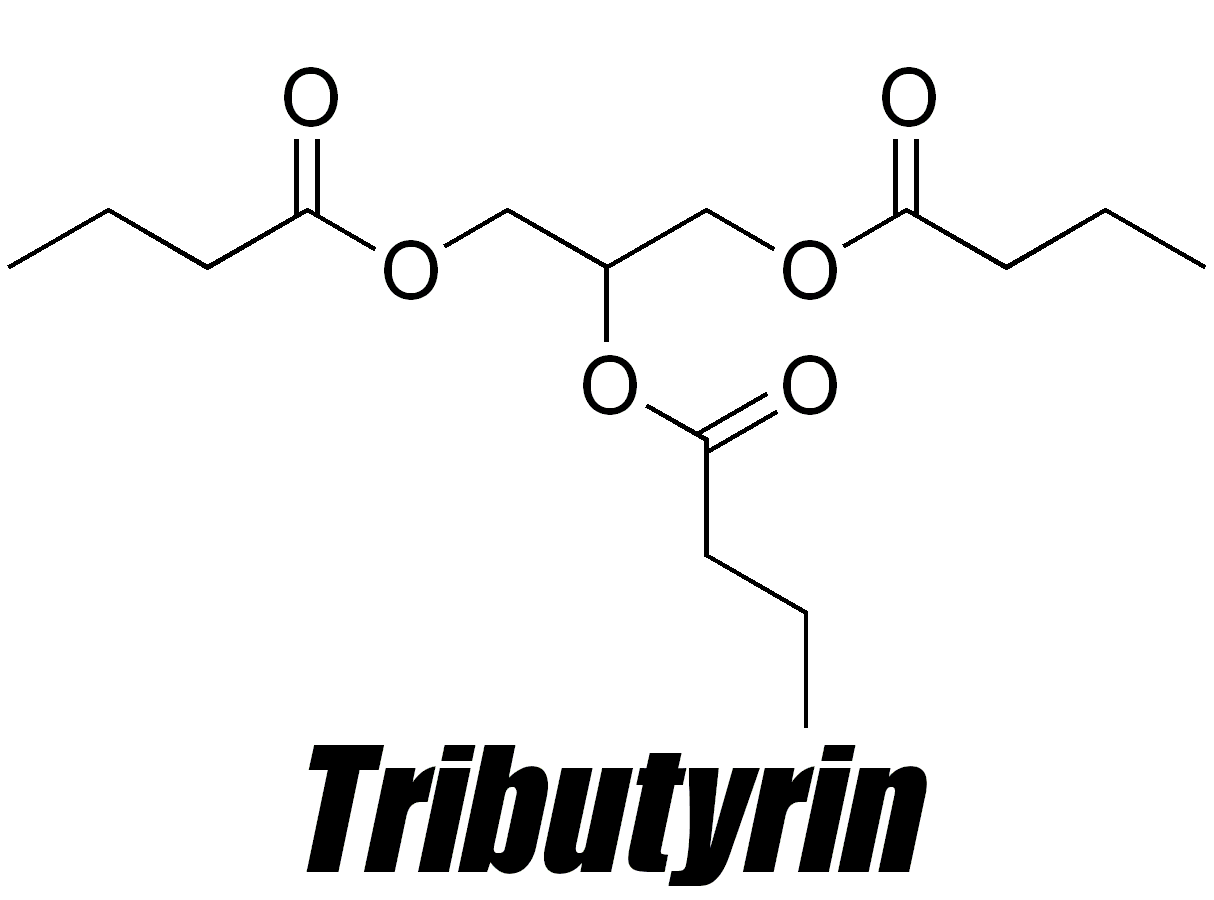

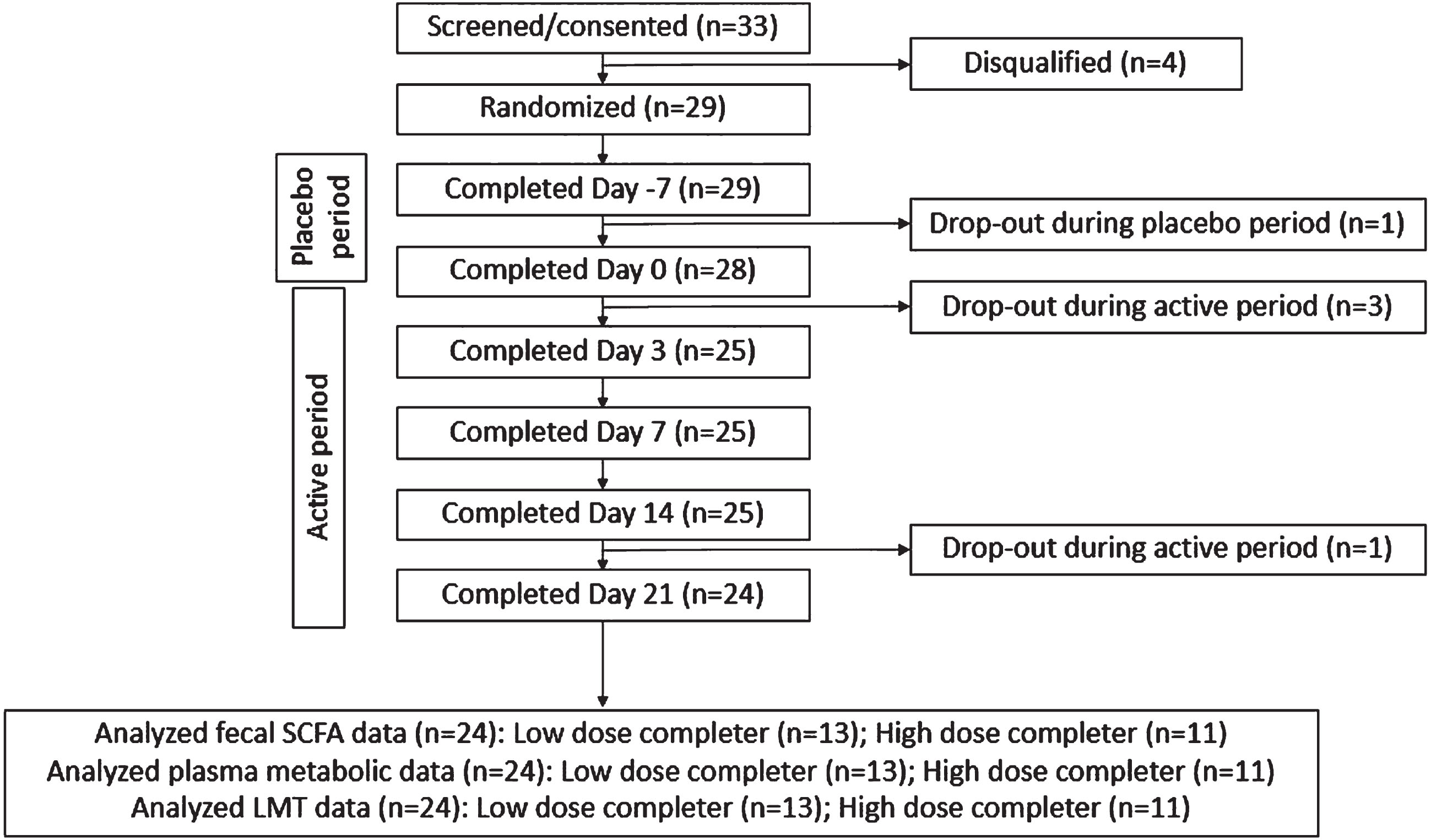

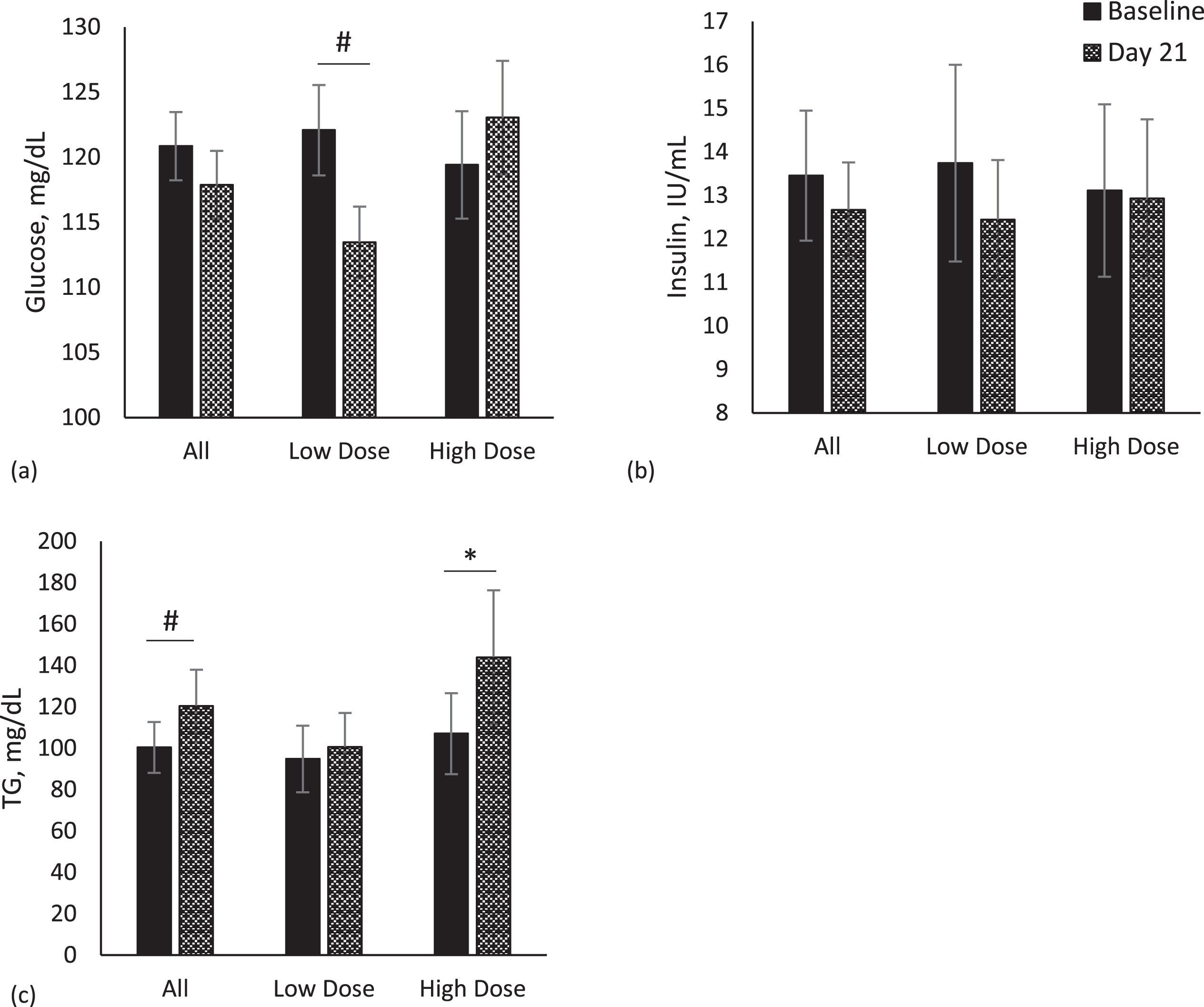
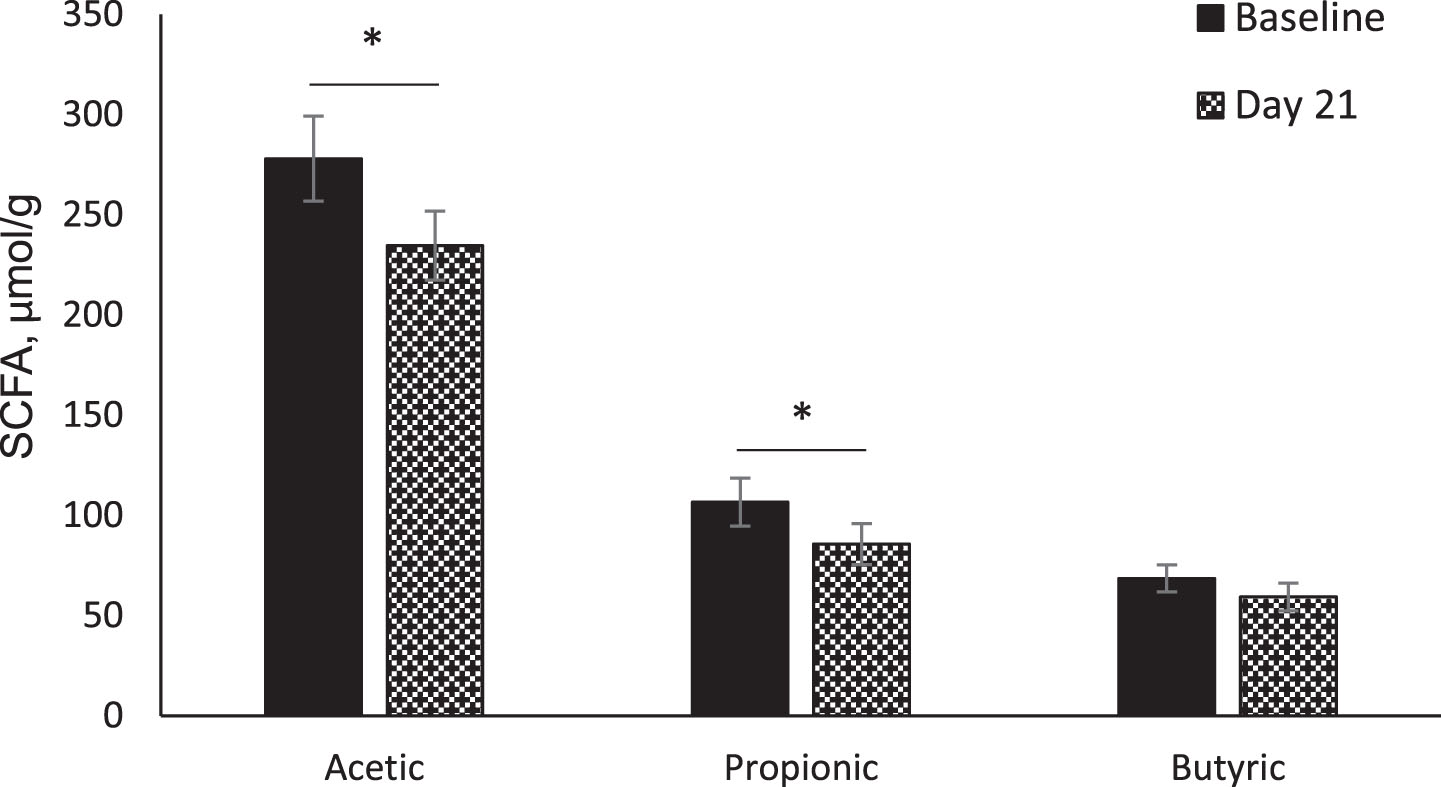

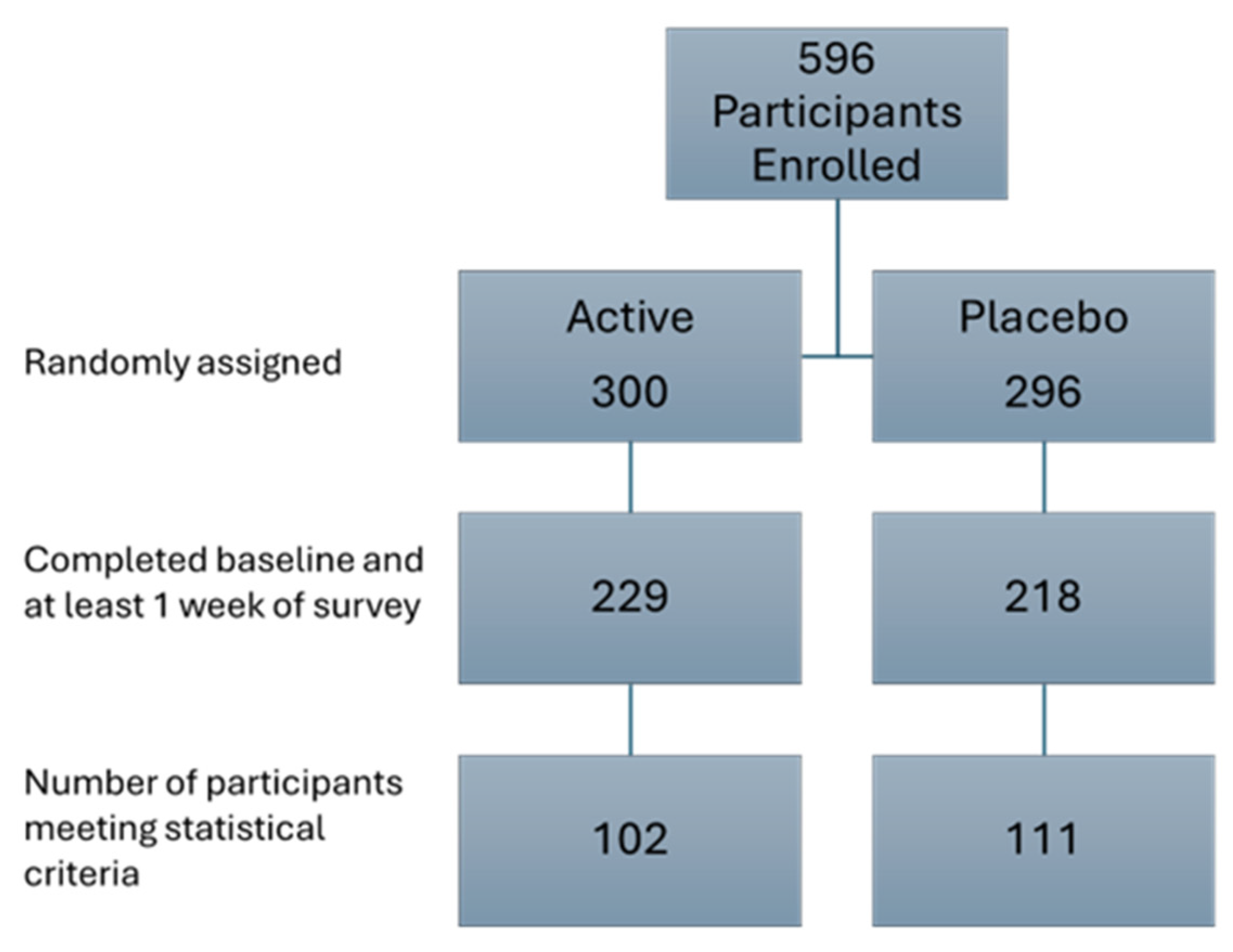
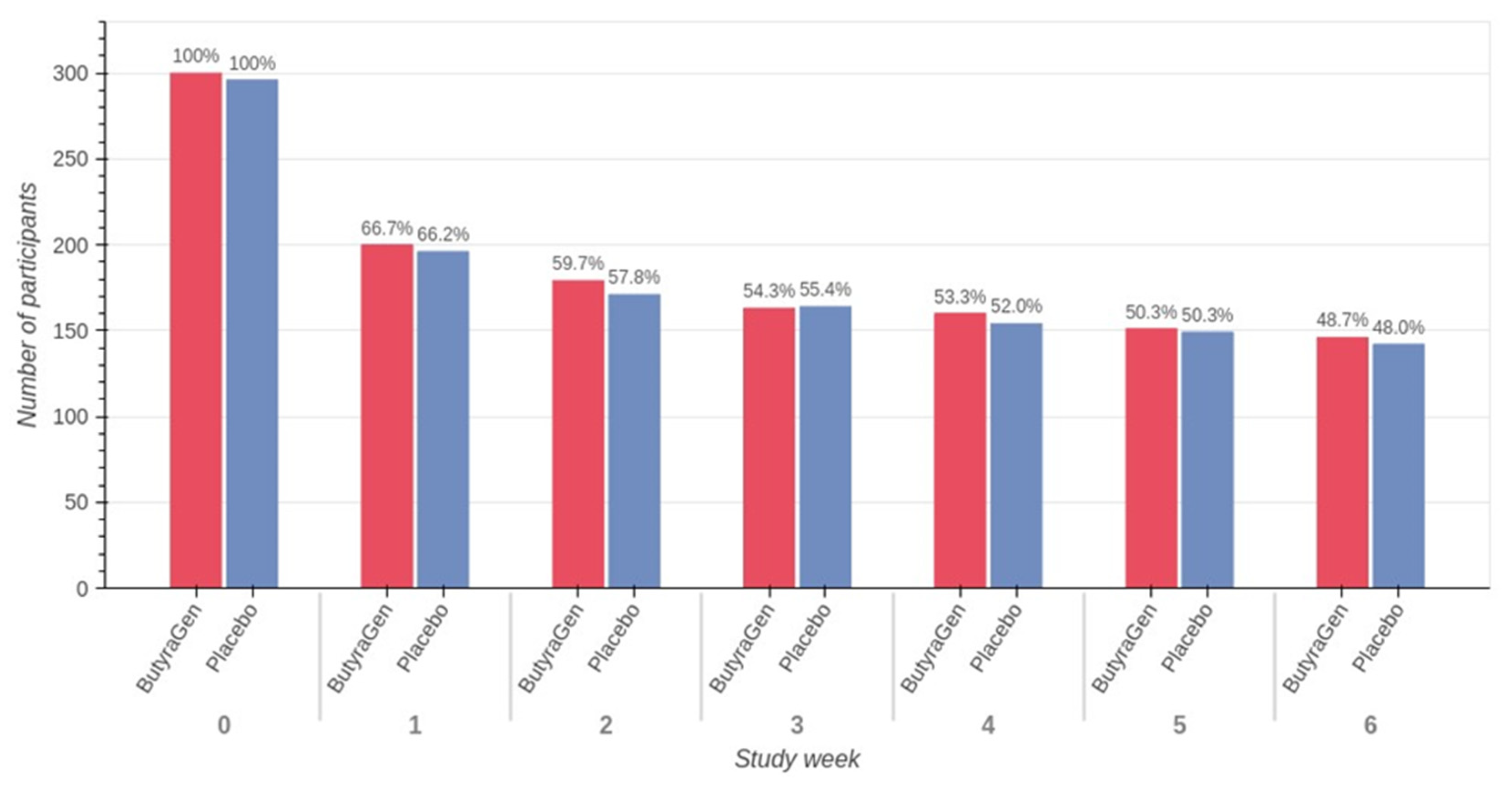
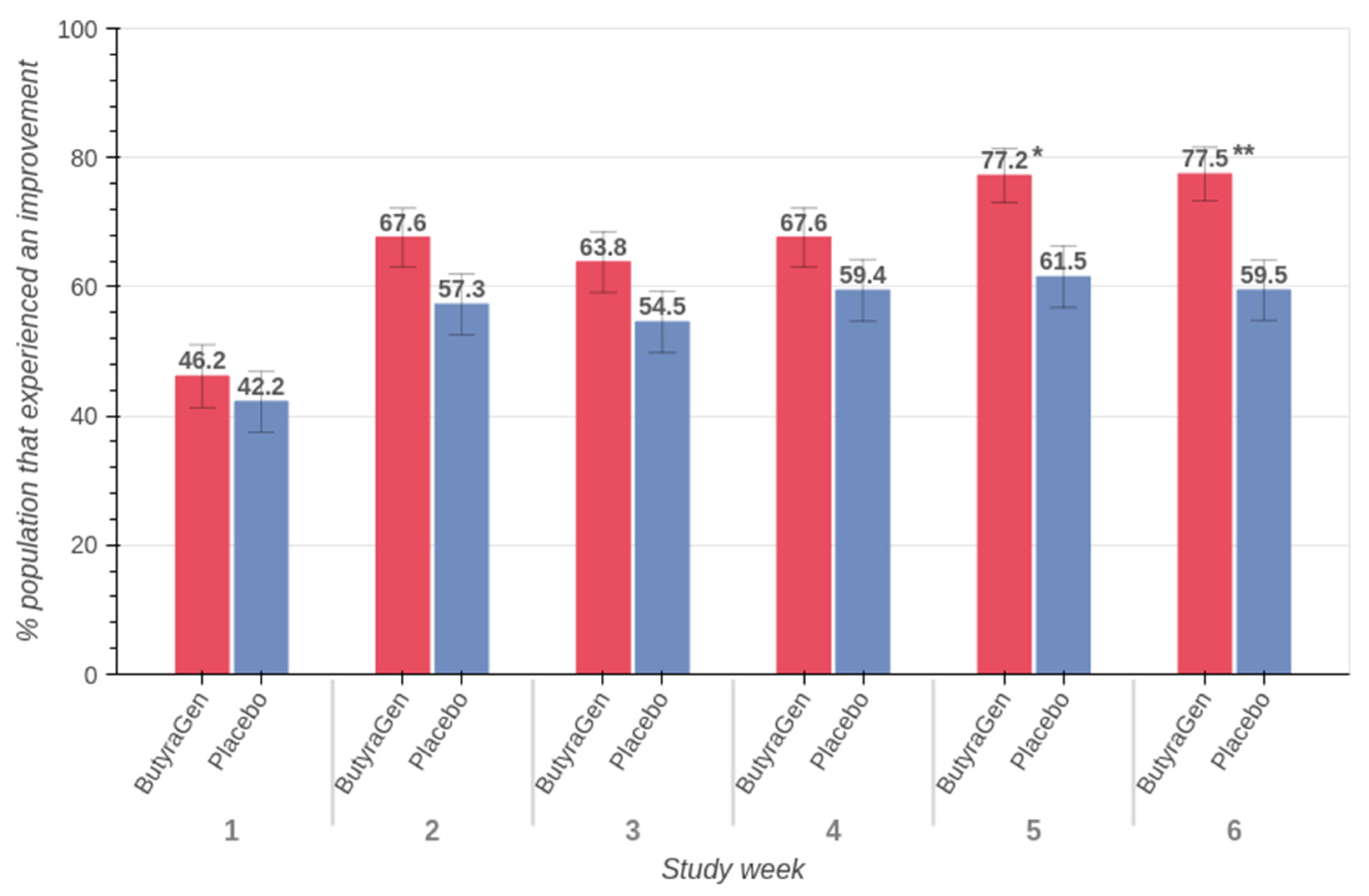
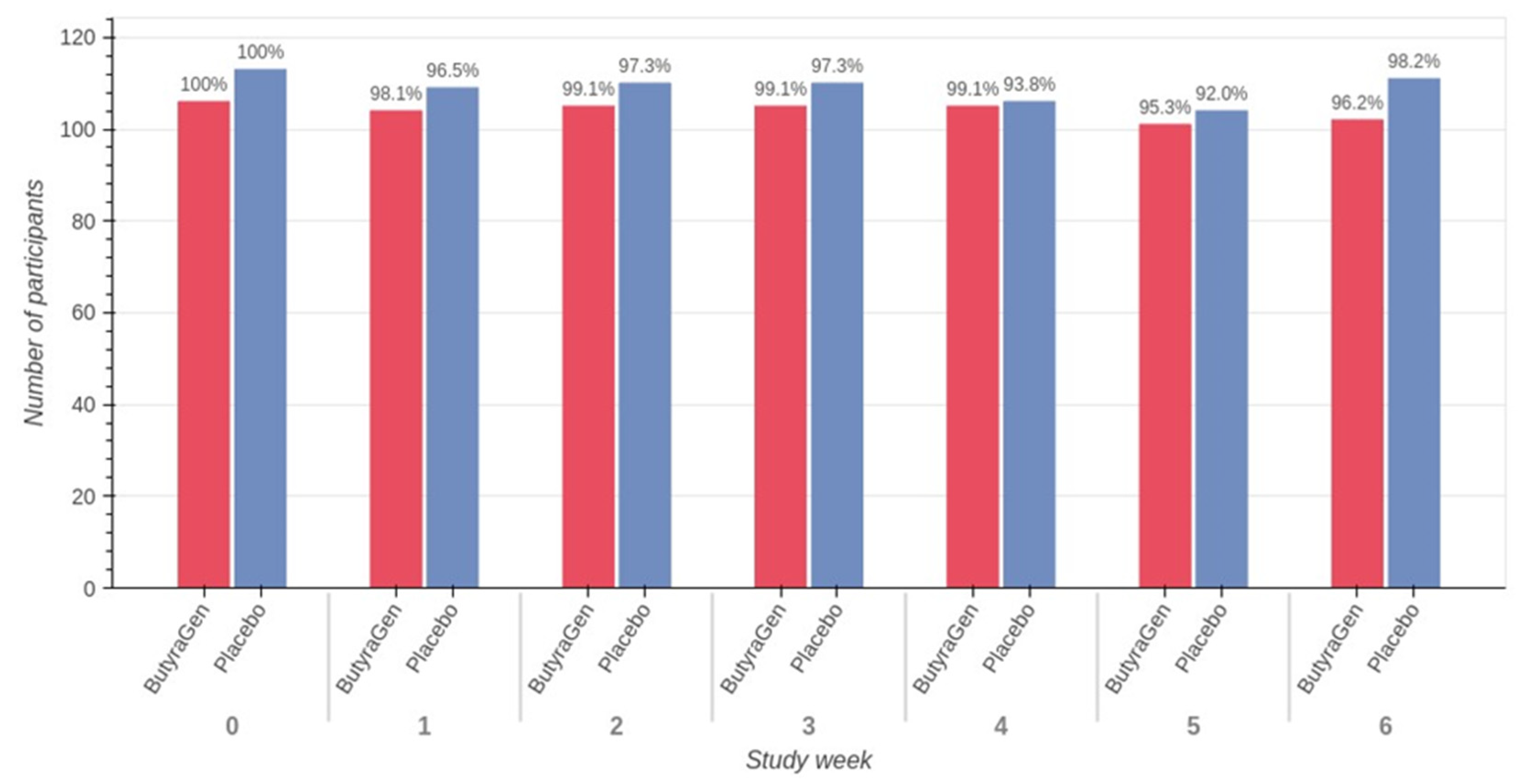
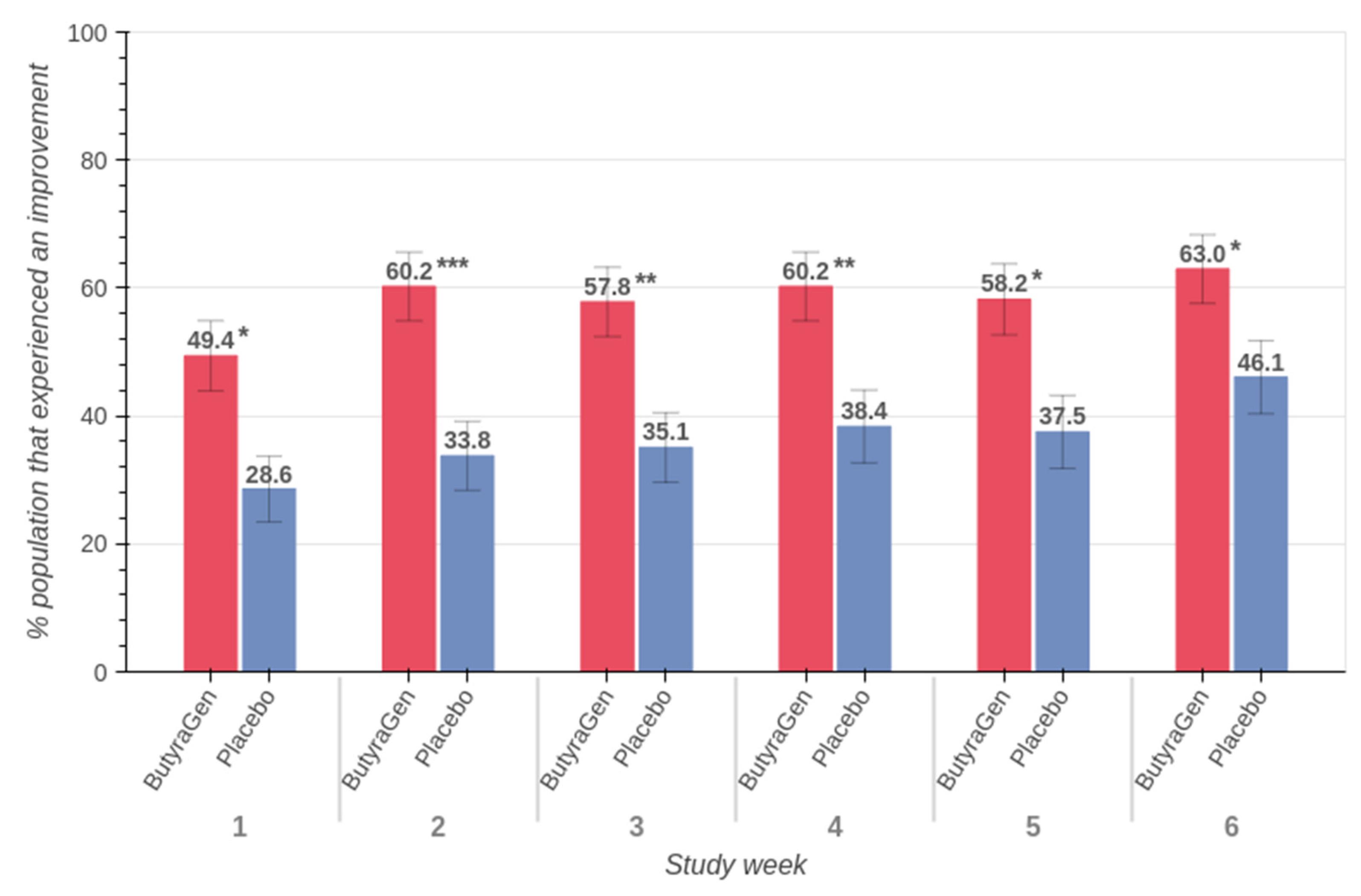
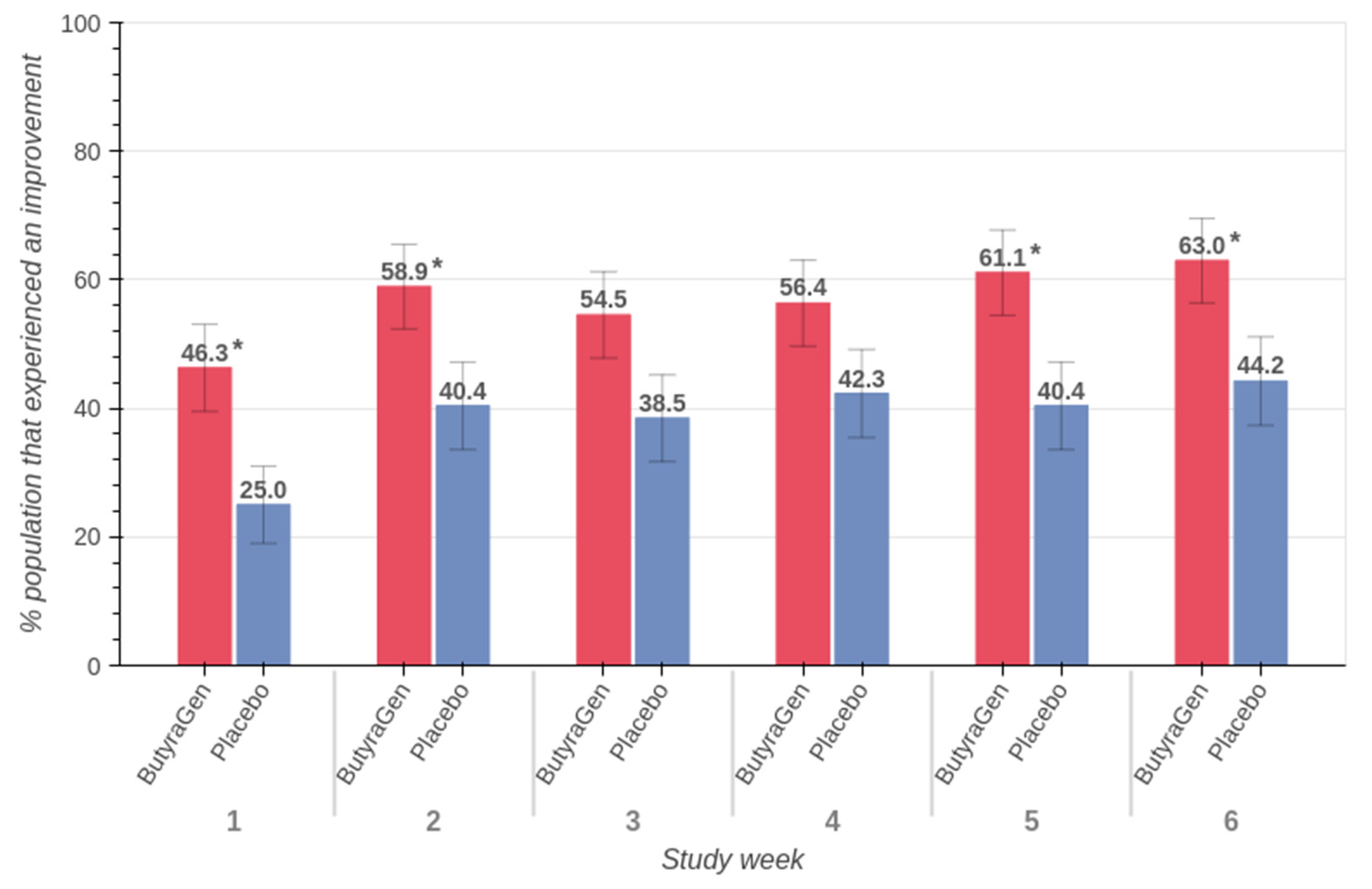
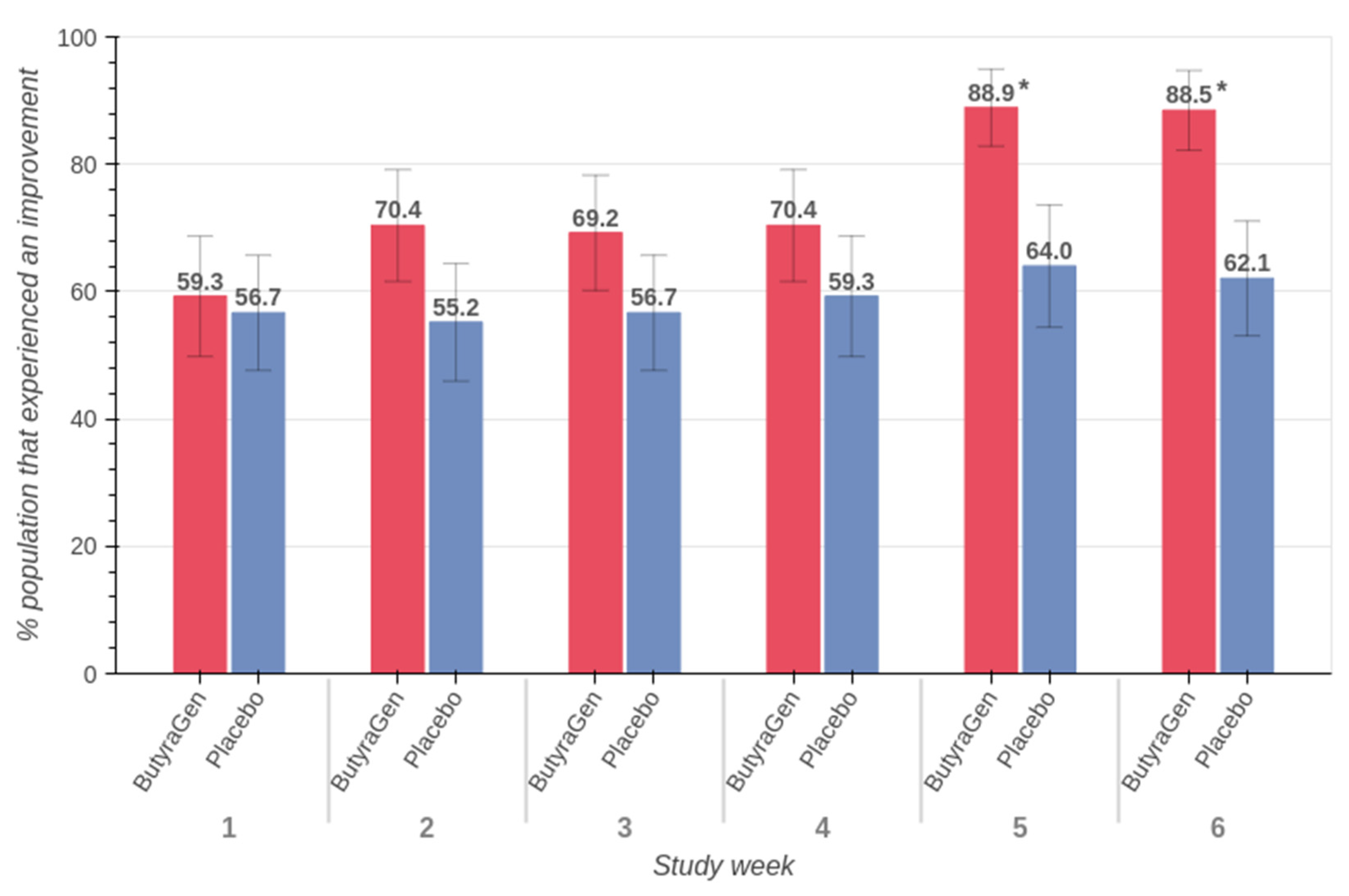




Comments and Discussion (Powered by the PricePlow Forum)